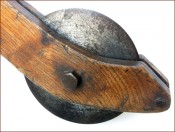Lawn Grooming
Welcome to Old Garden Tools collection of Lawn Grooming Tools. We have laid our images out in museum style so that you may concentrate just on the images without any other distractions. Just hover over the image or click on it to see a larger version with some additional information.
Please contact us if you require further information.
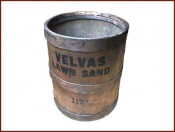 Container S
Container S
English. mid 20C. Wooden Lawn Sand barrel by Velvas. Contained 112 lbs sand or 2 Bushels. Ref: Brown & Sons catalogue 1934. 25 shillings.
 Container X
Container X
English. 20C. Ransomes Lawnmower Tools Box.
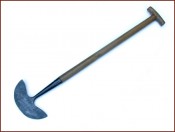 Edging Iron A
Edging Iron A
English. Early 20C. Folded and beaten wrought steel with ash T-handle. 1 rivet. Stamped ‘Bulldog. ****** Tools Ltd’. 35 inches (89cms). This model was sold very widely by Bentleys, Suttons, Carters and was manufactured by Brades, Skelton, Nash Tyzack and Trojan in Australia. The cleatless style was pushed into the lawn edge.
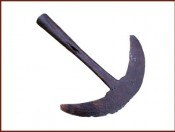 Edging Iron B
Edging Iron B
The design of Edging Irons has little changed from this early example to today. Addition of cleats allowed the foot to be employed rather than rely on a less efficient hand push into the lawn edge. This early iron is possibly a Whaling Flensing Iron.
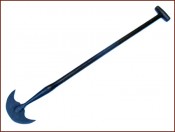 Edging Iron D
Edging Iron D
C19C. Steel blade welded and riveted into decorative slot in steel socket. Ash T-handle. Subimage shows historic simple repair to shaft. 41.5 inches (105cms). This style was prolifically manufactured by all the main manufacturers and was named Edging Iron, Edging Knife, Turf Edger and Grass plot Knife.
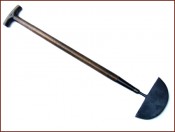 Edging Iron E
Edging Iron E
English. Mid 20C. Steel half moon blade with socketed ash T-handle. Stamped on blade ‘C T Skelton & Co. Sheffield. Made in England’. 35.75 inches (91cms) x 8 inches (20cms).
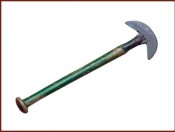 Edging Iron G
Edging Iron G
English. Mid 20C. Steel and ash. Traces green paint. 22.5 inches (56.8cms).
 Grass Shears A
Grass Shears A
Cranked Grass Shears. Ref: Silber & Flemming 1883. Also sold as Sheep Shears. An example of cross over. 12.75 inches (32.4cms).
 Grass Shears B
Grass Shears B
English. Robert Sorby. Bent Grass Shears. Ref: Silber & Flemming 1883. 13.5 inches (34.5cms).
 Grass Shears C
Grass Shears C
British. 1960’s. Greensleeves garden trimmer with box. Stamped ‘Made in England from Sheffield Steel by Mitchell & King Ltd. 220 Bedford Avenue Slough Bucks’. Green painted steel handle, polished steel blades and green rubber grips. Shears: L12.5 inches (31.7cms) x W 3.75 inches (9.5cms).
 Grass Shears D
Grass Shears D
English. Stamped ‘Made in England. Shear No. 555’. Traces green paint. Pressed steel handles. Also made in France as Cisaille a gazon manuelle Tr. Grass hand shears. 10.75 inches (27.5cms) x 2.75 inches (7.2cms).
 Grass Shears E
Grass Shears E
French. 20C. Moulded steel stamped ‘Gouvy’. 12.25 inches (31cms) x 2.5 inches (5.6cms).
 Grass Shears F
Grass Shears F
Foreign made for UK market. 20C. Stamped ‘Hot drop forged Steel. Foreign’. Red painted sprung handles. 11.5 inches (29.2cms) x 2.5 inches (6.2cms).
 Grass Shears G
Grass Shears G
English. Early 20C. ‘Trimateurs’. Ref: Geo Monro Ltd. Horticultural Sundries 1930. p41. Pressed steel sprung with traces green paint on handles. Stamped ‘Patent Pending. Made in England’. 10.5 inches (27cms) x 1.75 inches (4.5cms).
 Grass Shears H
Grass Shears H
Danish. KN. On label ‘Made in Denmark. Scalloped edge for gathering clippings. Handles red painted. L 11.75 inches (30cms) x W 3.5 inches (8.8cms) x H 4 inches (10.2cms).
 Grass Shears J
Grass Shears J
English. 20C. Stamped ‘Burgon & Ball. Patent No 294. Made in England’. and logo with B B. Large size. 13.7 inches (35cms).
 Grass Shears K
Grass Shears K
Mid 20th C English. Steel Grass or Topiary Shears. Red painted handles. Leather Sheath with buckle. Stamped ‘Ward & Payne Ltd. 302. Sheffield. Made in England. 13.25 inches (34cms).
 Horse Boots A
Horse Boots A
English. C1900. Coles. Two boots marked by incision on front. ‘BL. BR.’ One with started incision ‘vertical of letter F for front’. Stamped with logo ‘Coles Patent’. one boot stamped ‘Pattisons First’. Boots lined with compressed pading. L 7.75 inches (20cms) x W 7.75 inches (20cms) x H 5 inches (13cms).
 Horse Boots C
Horse Boots C
English. C1900. Set of 4 Pony Lawnmowing Boots. 4.5 inches (10.5cms) x 3.75 inches (9.5cms).
Subimage shows comparison with cart horse lawnmowing boots.
1841 Alexander Shanks of Arbroath patented first pony-drawn mower. Horse boots first manufactured in 1850. After that Samuelson of Banbury and Thomas Green of Leeds made wider mowers.
In 1820 there were no mechanised garden tools. 18c lawns were rolled flat and scythed.
1831 pull/push 19” cylindrical mowers made by Budding and one was bought by Regents Park. Gardners Chronicle advertisements in the first edition in 1852, offered Buddings Mowers Man, Pony, and Horse pulled sizes. After that Ransomes was licenced to manufacture it. 1946 petrol and electric mowers came in. Thomas Green advertised sets of 4 boots in 1859.
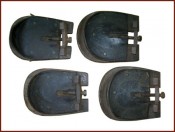 Horse Shoes A
Horse Shoes A
English Circa 1900. Coles patent. Front pair 9.5 inches (24cms) x 7.5 inches (18.8cms). Hind pair. 9.5 inches (24cms) x 8 inches (20cms).
Used by pony-drawn early lawn mowers to protect lawn from 1841. This shoe was fixed to the pony hoof and screw tightened rather than the more common boots which were tightened by straps.
1841 Alexander Shanks of Arbroath patented first pony-drawn mower. After that Samuelson of Banbury and Thomas Green of Leeds made wider mowers.
In 1820 there were no mechanised garden tools. 18c lawns were rolled flat and scythed.
1831 pull/push 19” cylindrical mowers made by Budding and one was bought by Regents Park. Gardners Chronicle advertisements in the first edition in 1852, offered Buddings Mowers Man, Pony, and Horse pulled sizes. After that Ransomes was licenced to manufacture it. 1946 petrol and electric mowers came in.1841 Alexander Shanks of Arbroath patented first pony-drawn mower. After that Samuelson of Banbury and Thomas Green of Leeds made wider mowers.
In 1820 there were no mechanised garden tools. 18c lawns were rolled flat and scythed.
1831 pull/push 19” cylindrical mowers made by Budding and one was bought by Regents Park. Gardners Chronicle advertisements in the first edition in 1852, offered Buddings Mowers Man, Pony, and Horse pulled sizes. After that Ransomes was licenced to manufacture it. 1946 petrol and electric mowers came in.
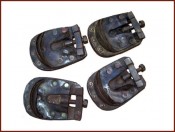 Horse Shoes B
Horse Shoes B
English Circa 1900. 6 inches (15.5cms) x 4 inches (10.3cms).
Used by pony-drawn early lawn mowers to protect lawn from 1841. This shoe was fixed to the pony hoof and screw tightened rather than the more common boots which were tightened by straps.1841 Alexander Shanks of Arbroath patented first pony-drawn mower. After that Samuelson of Banbury and Thomas Green of Leeds made wider mowers.
Probably constructed by local saddlers, the basic ‘bag boot’ featured a leather upper and sole in a truncated cone shape. The first lawn boots advertised for sale were made by Green’s in 1859 to accompany their mowing machines. The Streatham firm of H Pattisson & Co made significant improvements and produced lawn boots from 1898 in 30 stock sizes, using Cole’s patent with no upper but a strong steel plate. These were secured by a screw clamp and used a waterproof leather outer sole or motor-tyre rubber. They also produced boots with a traditional leather upper on the Cole’s patent sole. It was often the garden boys who had the task of oiling and cleaning the boots, as well as taking them for repair when the straps or soles broke.
In 1820 there were no mechanised garden tools. 18c lawns were rolled flat and scythed.
1831 pull/push 19” cylindrical mowers made by Budding and one was bought by Regents Park. Gardners Chronicle advertisements in the first edition in 1852, offered Buddings Mowers Man, Pony, and Horse pulled sizes. After that Ransomes was licenced to manufacture it. 1946 petrol and electric mowers came in.
Please contact us if you require further information.
 Lawn Aerator C
Lawn Aerator C
British. 1963. Graham Lawn Aerator. Ref: J C Withers catalogue 1963. 45 shillings. Steel with rubber grips. Tray collects plugs. ‘Makes the lawn as smooth as velvet’. H31.6 inches (80cms) x W 10.4 inches (26cms).
 Lawn Aerator D
Lawn Aerator D
English. Early 20C. Stamped ‘C T Skelton & Co. Sheffield. England’. 33 inches (84cms) x 13.75 inches (35cms).
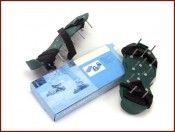 Lawn Breather Shoes
Lawn Breather Shoes
British. 1990. Made in Taiwan. Green plastic sole with 13 steel spikes and 2 nylon foot straps. 12 inches (30.5cms). Coloured cardboard box labelled ‘Lawn Breather. Bring new life to lawns’. Instructions and spanner to adjust spikes.
 Lawn Edger A
Lawn Edger A
English. 1934. Ref: Brown & Sons 1934 ‘Border Shears’ 9 shillings each.
In 1826 in the first volume of ‘The Gardeners Magazine’, Charles M’Intosh described a new Edging Iron of his invention with a coulter or cutting edge fixed to a wheeled frame. In the same year a French annual ‘Le Bon Jardinier’ illustrated a verge cutter consisting of a cutting wheel on a straight handle. IN 1880 a wheeled edger with shears was patented by P Adie.
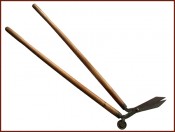 Lawn Edger B
Lawn Edger B
English. Mid 20C. Wheeled Lawn Edger with ash handles. 44 inches (112cms).

 Lawn Edger D
Lawn Edger D
English. Early 20C. ‘T Green & Son Ld. Leeds & London.’ Raised lettering and raised number ‘5061’ on back plate.
In 1826 in the first volume of ‘The Gardeners Magazine’, Charles M’Intosh described a new Edging Iron of his invention with a coulter or cutting edge fixed to a wheeled frame. In the same year a French annual ‘Le Bon Jardinier’ illustrated a verge cutter consisting of a cutting wheel on a straight handle. IN 1880 a wheeled edger with shears was patented by P Adie.
 Lawn Edger G
Lawn Edger G
English. Mid 20C. 2 handle model.
 Lawn Edger H
Lawn Edger H
English. 20C Ward & Payne. Angled 90 degrees.
 Lawn Edger I
Lawn Edger I
English. 20C. Ransomes Edge Trimmer. Ipswich. England. Steel and wood. Green and Red paint. Ref: W Haynes Reading. Garden & Estate Guide 1933. p11. Ref: Carters 1926.
In 1826 in the first volume of ‘The Gardeners Magazine’, Charles M’Intosh described a new Edging Iron of his invention with a coulter or cutting edge fixed to a wheeled frame. In the same year a French annual ‘Le Bon Jardinier’ illustrated a verge cutter consisting of a cutting wheel on a straight handle. IN 1880 a wheeled edger with shears was patented by P Adie.
 Lawn Edger J
Lawn Edger J
English. 20C. Blades stamped ‘Three-Way Patent Shears’ and ‘Sheffield England’ and ‘6 or 9’ and base of blades stamped ‘1, 1, 3, 3, 2 and 4’. to set positions of blades one of three ways through 2 square holes and tightened with 2 wing nuts and spring washers. Beech handles. Kangaroo brand. Average length 43 inches (109cms).
 Lawn Edger L
Lawn Edger L
English. Mid 20C. Long reach grass shears with angled blades. Traces red paint. Angled rubber grips. 46.5 inches (118cms).
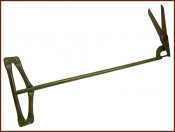 Lawn Edger M
Lawn Edger M
English. Mid 20C. Steel with squeeze action grips transmitted to blades by integral rod. Transfer label on rod shows “QUEECO, and ‘Patent Pending’ and ‘Product’. 34 inches (87cms).
A patent was granted to Price in 1935. Eames & Price were the manufacturers. It was advertised in 1946 and in 1953 an advert shows a price of 19s6d.
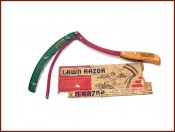 Lawn Razor and Box
Lawn Razor and Box
American. 20C. Red and Green painted steel and safety cover. Wood handle stamped ‘Lawn Razor. North Wayne Tool Company. Oakland. Maine. USA’. Cardboard packaging. Cutting edge replenished with a series of razor blades. 11.5 inches (29.5cms) x 13.5 inches (34cms).
 Lawnmower F
Lawnmower F
USA. 1920 to 1950. Similar models later assembled and sold by Lloyds in UK. This model is ‘The Fairway’ a variant of ‘The Pensylvania’, a rough/long grass model recommended for golf courses’. Stamped ‘1001. Pennsylvania Fairway. 1009 & 4. Made in USA’ and Logo. Driven by lateral gearwheels. Red and green painted with ash and beech handle fixed by steel T-fitting. 53.5 inches (136cms).
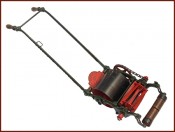 Lawnmower G 1
Lawnmower G 1
English circa 1918. A restored working Mower complete with Grass Box and Carriage. The Silens Messor by Thomas Green & Sons. Willoughby Green son of Thomas patented the first chain driven mower in 1859. Called The Silens Messor or silent cutter. Manufactured to the 1930’s in sizes 6 inch to 48 inches. Large sizes were horse drawn. The grass box was offered at extra cost and a Carriage for transporting the mower was offered in the late 1800’s. This carriage was made by Joslins Ltd who were selling Greens Mowers since circa 1850. Joslins brass and copper axle plate is shown. Please see other Lawnmower G images – G2 and Lawnmower Carriage A.
Original spanner attached to ring on handle.
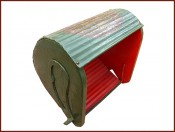 Lawnmower G2
Lawnmower G2
English. C1918. Silens Messor Grass Box. The Silens Messor by Thomas Green & Sons. Willoughby Green son of Thomas patented the first chain driven mower in 1859. Called The Silens Messor or silent cutter. Manufactured to the 1930’s in sizes 6 inch to 48 inches. Large sizes were horse drawn. The grass box was offered at extra cost and a Carriage for transporting the mower was offered in the late 1800’s. Please see other Lawnmower G images – G1 and Lawnmower Carriage A. W 10.25 x D 11 x H 8.25 inches (28 28 21cms).
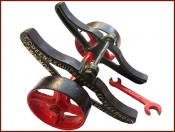 Lawnmower Carriage A
Lawnmower Carriage A
English. C1895. Silens Messor Lawnmower Carriage. The Silens Messor by Thomas Green & Sons. Willoughby Green son of Thomas patented the first chain driven mower in 1859. Called The Silens Messor or silent cutter. Manufactured to the 1930’s in sizes 6 inch to 48 inches. Large sizes were horse drawn. The grass box was offered at extra cost and a Carriage for transporting the mower was offered in the late 1800’s. This carriage was supplied by Joslins Ltd who were selling Greens Mowers since circa 1850. Joslins brass and copper axle plate is shown. Please see other Lawnmower G images – G1 and G2.
 Lawnmower History A
Lawnmower History A
Image and text from An Encyclopaedia of Gardening by J.C. Loudon, new edition of 1850:
‘Budding’s mowing machine is an admirable contrivance for cropping, or shearing lawns, grass-plots, or indeed any kind of short grass. In the operation of pushing forward the machine, the cylinder (a) rolls upon the ground like a wheel of a wheelbarrow; and, by the wheels and pinions connected with it, causes the revolving cutters to act rapidly, by their smooth outer edges, against the edge of the fixed rectangular steel plate (c), so as to crop or shear grass or vegetable surface. There is a box (d) in which all the grass cut by the machine is collected, thus saving the expense of sweeping. The machine may be easily rolled from one place to another without cutting by merely lowering the handles, so as to lift the gauge-roller from the ground.’
In 1830 a freelance engineer Edwin Budding invented the first lawnmower, adapting the design from his machine used in cotton-mills to trim the nap off cloth. This mower was manufactured by John Ferrabee at the Phoenix Foundry in Stroud, Gloucestershire, with the patent claiming ‘Country gentlemen may find using my machine themselves an amusing and healthy exercise’. Budding and Ferrabee produced more than 5,000 mowers from 1830 to 1863 with prices ranging from £4 10s up to £20. Licences were sold to other manufacturers and in 1832 J.R. & A. Ransome of Ipswich produced a version which was in production until about 1860.
1830: First Lawnmower. 1832 Regents Park bought a Budding mower.
1841: Alexander Shanks of Arbroath patented first pony-drawn mower.
1850: First Lawn mowing Boots.
1885: British Leyland manufactures a steam-powered mower.
1908: Ransomes using petrol engines.
1926: Ransomes invents the electric mower.
1960s: The Flymo is produced.
1994: The Husqvarna Solar Turtle lawnmower is unveiled (solar-powered).
Subimages show: Petrol Mower and Steam Mower from William Woods catalogue of 1909.
 Multicut Shears L
Multicut Shears L
English C1900. 11 bladed 14 inch wide assembly with 2 ash handles. The blades are unusual in that they are very thin and flexible so crossing when unopposed and flexing into place when closed in order to give a tight cut. Invented by W Clark of 232 Oxford Street London W. in 1880 and sold as ‘Patent Grass Cutter’ based on the principle of Clarkes Horse-Clipping Machine. It was made in 3 sizes; 8, 12 and 16 inches and sold with or without rollers and tray assembly. It was marketed as ideal for grass, hedge, ivy and other creepers, box borders, shrubs and trees, corn,clover and rye. Ridgway’s Best Black Clippers as it was then called, were first introduced in 1885 as a patent grass cutting machine . In the early 1900’s these were manufactured by C T Skelton of Sheffield. Ref: Wm Wood & Son catalogue of 1909 sold this at 11 shillings and 3 pence. Also Ref W Clark’s catalogue entry for Garden Implements show similar cutters. Dated 1884.
Referred to on p 407 in Beetons 1890 Aids to Gardening as a ‘Ridgeway’s Patent Grass Cutting Machine’ and discussed in the Aug 5 1880, issue of Horticulture as follows:
Ridgeway had a provisional patent for his Lawn Edge Trimmer in 1882 that was linked to an earlier 1879 patent for his Horse Clippers.
In Jan 1880 an article in The Farmers Magazine suggests that just as Clark transferred principles from his Horse Clipper across to his grass cutters. Ridgeway may have adopted similar principles across his Horse Clippers, Sheep Shears and Grass cutting machines all connected by that one Nov 1879 patent.
L39 inches (99cms).
 Roller G
Roller G
English. C1850. Stone and wrought iron.
Rollers were starting to be used in the 16th century. These were stone or wood cylinders. Wooden rollers were ballasted with water. By the mid 19th century, most garden rollers were made of cast iron. For larger lawns horses would be used to pull the rollers. In 1851, double cast rollers were developed by Mr Stuart which enabled tighter turns. In 1873 a new double cylinder roller with a non projecting axle was reported.



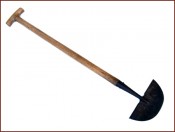 Edging Iron F
Edging Iron F
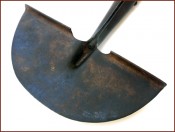
 Edging Iron H
Edging Iron H
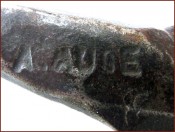
 Grass Shears I
Grass Shears I
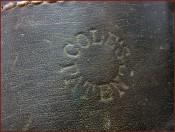
 Horse Boots B
Horse Boots B
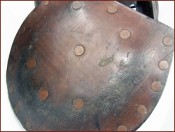
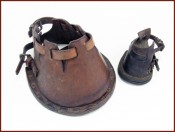
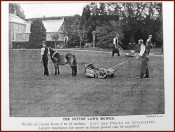
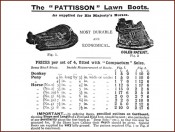
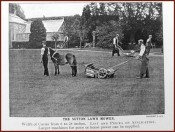
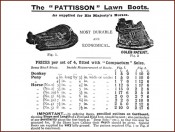
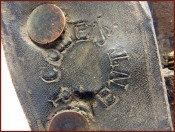
 Hose Holder A
Hose Holder A
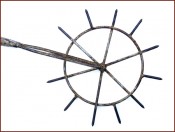 Lawn Aerator A
Lawn Aerator A
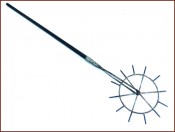
 Lawn Aerator B
Lawn Aerator B
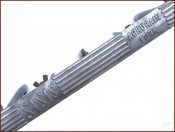
 Lawn Aerator E
Lawn Aerator E
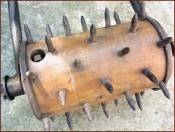
 Lawn Aerator F
Lawn Aerator F
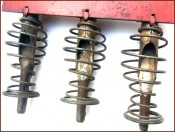
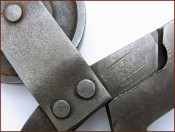
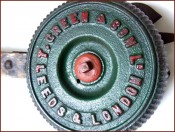
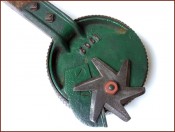
 Lawn Edger E
Lawn Edger E
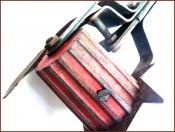
 Lawn Edger F
Lawn Edger F
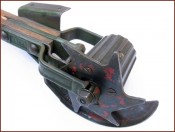
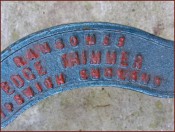
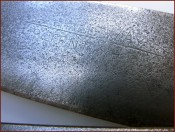
 Lawn Edger K
Lawn Edger K
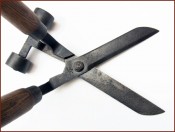
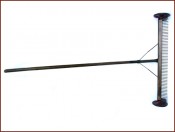 Lawn Rake C
Lawn Rake C
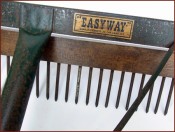
 Lawnmower B
Lawnmower B
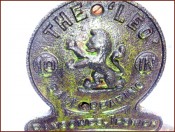
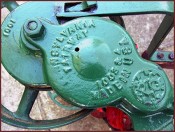
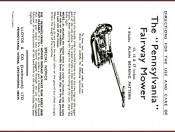
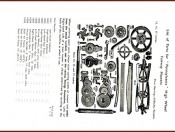
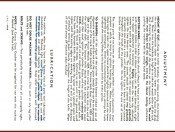
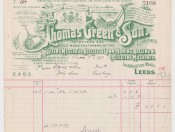
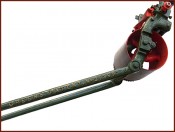
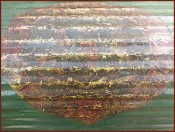
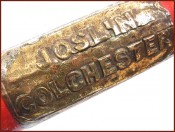
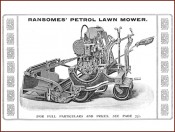
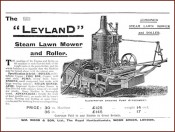
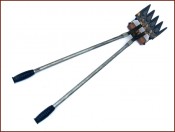 Multicut Shears I
Multicut Shears I
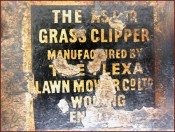
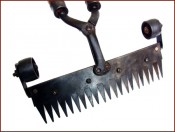
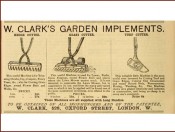
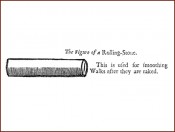
 Turf Racing Iron A
Turf Racing Iron A
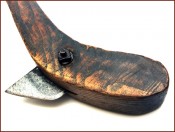
 Turf Racing Iron B
Turf Racing Iron B
